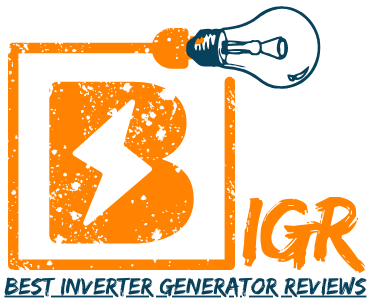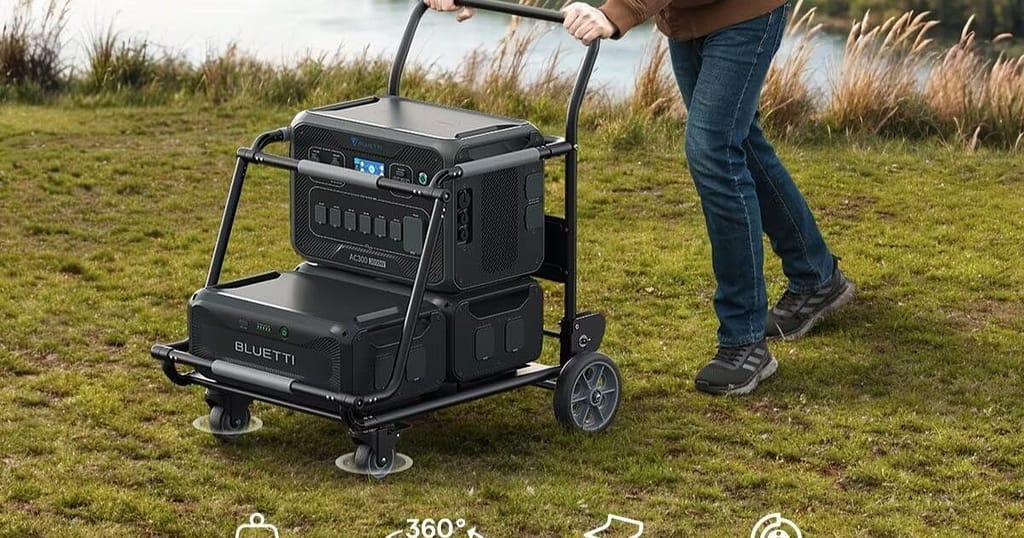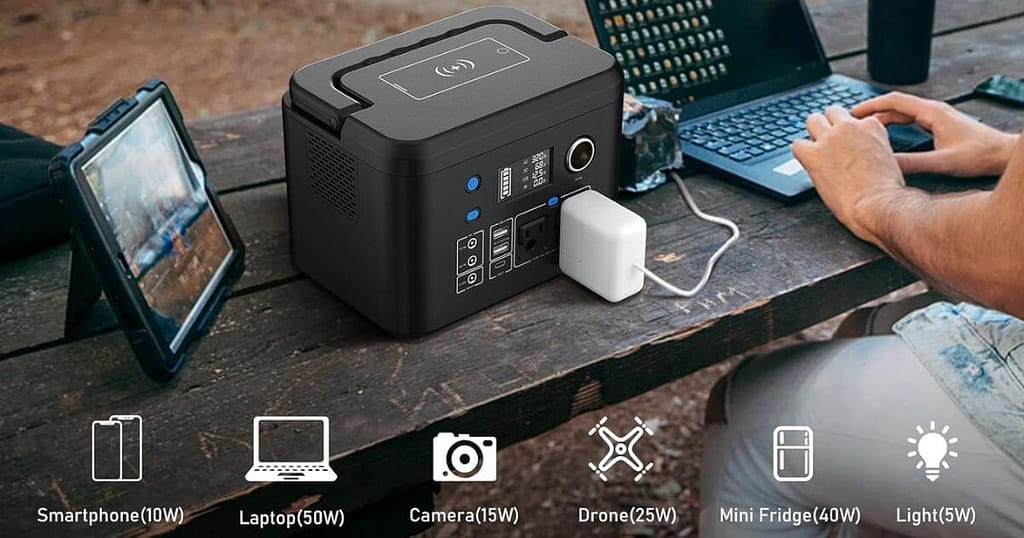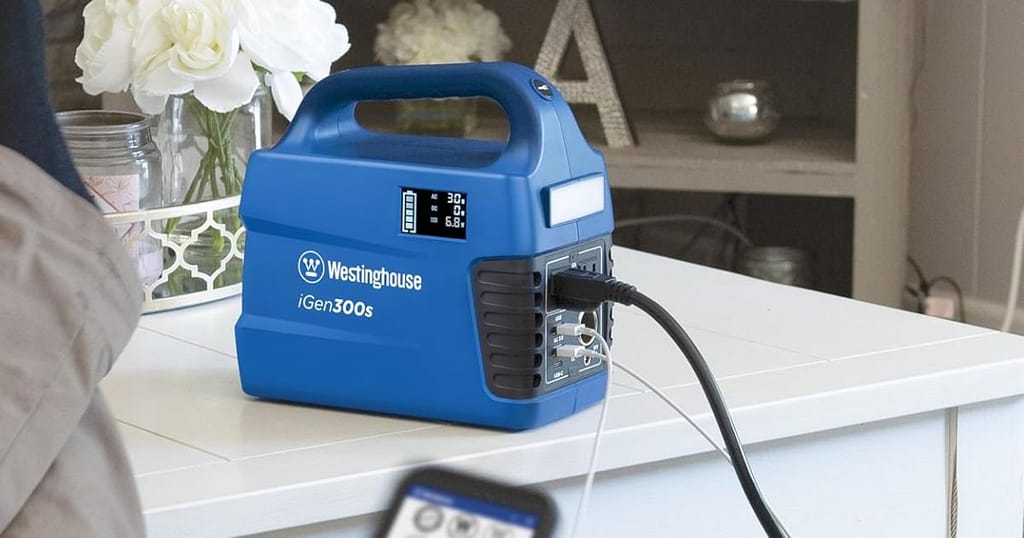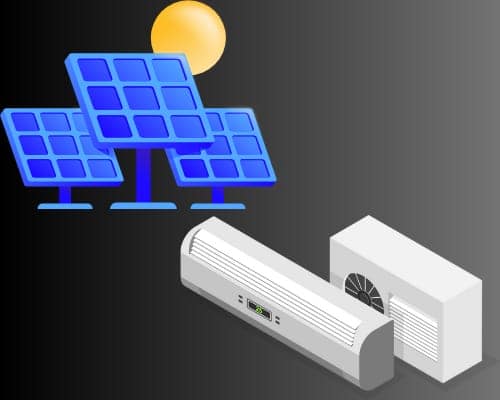
Wondering how to power your air conditioner with solar energy? If you’ve decided to go solar for your home cooling needs but aren’t sure where to start with sizing your photovoltaic (PV) system, you’re not alone. Properly determining the required number of solar panels can seem daunting if you need to familiarize yourself with energy calculations. However, with some basic details about your AC unit and usage patterns, estimating the photovoltaic capacity is straightforward.
Whether you live off-grid or are looking to supplement grid power with renewable solar, running air conditioning reliably is a big priority, especially in hot summer months. This article will review the key factors to consider and provide a simple step-by-step guide for quantifying panel requirements for your specific situation. Following a few example calculations, you’ll gain confidence in choosing the right solar solution for powering your air conditioner with pollution-free sunshine. Let’s get started exploring how to use solar energy to keep your home cool and comfortable!
How many solar panels do I need to run Air Condition?
1. Gather the Required Information:
First, check the specifications of your AC unit. This should tell you the power consumption rating in watts. For our example, let’s say it’s 1500 watts.
Next, think about your climate and typical AC usage patterns. Some things to consider include temperature trends throughout the year, the number of occupants and their daily schedules, the size of the home, and any other factors that affect runtime. Be realistic – take into consideration if it’s a very hot area. In our case, we estimated 8 hours of daily use.
The next critical piece is choosing your solar panel system size. Generally, you’ll want a solar array that generates at least as much power as your AC uses on an average summer day. Keep in mind this assumes good sunny weather, too.
To calculate panel size, multiply the AC wattage by the estimated daily hours of use. So, for our example, it’s 1500 watts x 8 hours = 12,000 watt-hours or 12 kilowatt-hours (kWh) of energy needed daily.
Most solar panel kits are rated in watts. To get the required wattage, divide the daily energy needed by the sun hours in your area. On average, you can estimate five sun hours per day, but check your location’s average. With 5 hours of sunlight, we’d need a 12,000/5 = 2,400 watt or 2.4-kilowatt solar panel system.
2. Calculate Daily Energy Consumption:
We already know the power consumption rating from the first step, which, for our example, AC unit is 1500 watts or 1.5 kilowatts (kW).
The next piece we need is the estimated daily run time. Based on the expected usage pattern, we determined the AC would run for around 8 hours per day.
We multiply the power rating by the run time to determine the total daily energy use. The formula is:
Daily Energy Consumption = Power Consumption x Daily Usage Hours
Plugging in our example numbers:
Daily Energy Consumption = 1.5 kW x 8 hours
= 12 kilowatt-hours (kWh)
Breaking it down step-by-step:
- Power consumption: 1.5 kW
- Daily run time: 8 hours
- To calculate energy, we multiply power by time: 1.5 kW x 8 hours
- The units for energy are kilowatt-hours (kWh)
- So, for our example AC unit, the daily energy consumption is 12 kWh
3. Consider Solar Panel Efficiency and Sunlight Availability:
When considering solar panel efficiency and sunlight availability for sizing your air conditioner solar system, there are a few essential factors to keep in mind:
Solar panel efficiency ratings can vary from about 15% up to 22% conversion efficiency. The higher the rating, the more electricity each panel will produce per square foot of surface area. Typically, monocrystalline or polycrystalline silicon solar panels fall in the 18-20% efficiency range. Looking for panels closer to 20% efficiency or above can help ensure your system generates adequate power overall.
Geographic location and seasonal sunlight levels significantly impact total sunlight exposure and energy production from your solar panels. Areas farther north see significantly less direct sun, especially in winter, compared to southern regions. Urban environments or locations with many trees and buildings blocking sunlight also reduce solar exposure versus open rural spaces. Most experts recommend derating your projected system size by 10-20% if in a less optimal sun zone to account for this variability.
Even on cloudier days when full sunlight isn’t available, solar panels will still produce some partial output thanks to diffuse light. But properly oversizing your system based on your specific geographic coordinates and average daily sun hours, as calculated by online solar sizing tools, helps ensure your air conditioner’s energy needs are met on all but the heaviest overcast summer days.
Does this help explain in a more cohesive narrative why panel efficiency ratings and local sunlight availability are important spec considerations when determining the size of your off-grid air conditioner solar array?
4. Determine Solar Panel Output:
Solar panels are rated based on peak power output or maximum wattage generated under ideal light conditions. This rating is important, as it signifies how much electricity a particular panel model can produce at peak efficiency.
Ratings are typically given in Watts – for example, a “300W solar panel” refers to its peak power rating of 300 Watts. This doesn’t necessarily mean it will generate 300W continuously, but it establishes the panel’s potential upper limit under perfect full-sun exposure.
It’s also important to note that the peak rating is based on standard test conditions (STC) of 1000W/m2 sunlight, 25°C cell temperature, and AM 1.5 solar spectrum. In the real world, varying weather and installation angles affect actual output levels.
To approximate a panel’s daily energy generation for sizing, most experts estimate around a 20% derating of its peak rated wattage. A 300W panel might realistically average 240W/day over the course of changing conditions.
Correctly accounting for a panel’s rated capacity rating upfront and reasonable derating factors will result in a more accurately sized system to meet your off-grid AC reliably needs 365 days a year.
5. Calculate the Number of Solar Panels:
There are a few key steps to follow when calculating the number of solar panels needed for your off-grid air conditioner system:
First, we must determine the daily energy consumption in kilowatt-hours (kWh) the AC unit requires. This is found by taking the power rating in kilowatts and multiplying it by the estimated daily operating hours.
Once we know the daily kWh demand, the next item is identifying the solar panels that will be used. The panel wattage rating establishes its potential peak output. It’s common for spec sheets to list this in Watts, so we’ll convert it to Kilowatts for the calculation by dividing it by 1000.
With the daily kWh load and per panel kW output in hand, the formula is Daily Energy Consumption (kWh) divided by the Solar Panel Output (kW). This provides an estimated panel quantity needed.
Let’s apply it to our example where the AC uses 12kWh daily, and we’re using 300W solar panels. 300W divides to 0.3kW panel rating. Then, the 12kWh load divided by the 0.3kW panel output equals 40 panels.
This estimate assumes consistent production, but real-world adjustments may be needed over time based on your location’s weather patterns. Still, going through these quantification steps upfront helps properly size the overall system from the get-go.
Conclusion
By walking through the systematic process of determining your AC’s energy needs and local solar conditions and performing the basic calculations, you now have a grounded understanding of how to quantify the necessary photovoltaic capacity accurately. While every home’s circumstances will vary to some degree, applying the general methodology laid out here provides a smart starting point for right-sizing a renewable solar energy system.
With solar technology continuing to advance and panel installation costs declining, powering essential home appliances like air conditioning through clean, sun-generated electricity is becoming increasingly viable and affordable. I hope this guide has helped boost your confidence in evaluating if a custom solar cooling solution makes sense for your property. With some pencil-pushing, you’ll be well-equipped to compare installation bids and feel confident in the contractor’s proposed design.
Whether off-grid or on, taking charge of powering your air conditioner sustainably through solar is a satisfying way to save money while reducing your environmental impact. Let the sunshine be your ally in staying comfortable through even the hottest days ahead. I wish you clear skies and ample renewable energy as you make your home more self-reliant and climate-friendly.
FAQs
Q: How can I calculate the solar panel needs for A/C?
A: To calculate the solar panel needs for A/C, you’ll need the BTU rating of your AC unit and the wattage it draws. Divide the wattage by 120 to get amps, then multiply by 1.2 to account for inverter losses. This gives you the minimum panel wattage needed. You’ll also need at least one day’s energy storage for nights.
Q: What size air conditioner can a 10-panel solar system run?
A: A 10-panel (approx. 3,000 watts) system could comfortably run a smaller window AC unit up to about 5,000 BTU or a mini-split up to 18,000 BTU on a sunny day. On cloudy days or for larger units, you may need more panels or an energy storage system.
Q: How long will my batteries run the AC overnight?
A: The runtime will depend on battery bank size and your AC’s power draw. A typical 400Ah lithium battery could run a smaller 5,000 BTU window unit for 6-8 hours. For larger units or all-day runtime, you’d need 800Ah or more of lead-acid or lithium batteries. Proper sizing is important for reliable overnight AC.
Q: Can I run AC and other household loads?
A: It’s possible to run AC and some other loads from solar, but the system needs to be sized appropriately. As a general rule, plan on dedicating about 85-90% of your solar+battery capacity just to the AC alone for reliable performance. The remainder can be used for small loads like lighting, fans, and device charging.
Q: Is AC compatible with off-grid solar?
A: Yes, air conditioning can absolutely be used in off-grid solar systems. The key is proper system sizing and accounting for the substantial power draw of A/C in your solar panel, inverter, wiring, and battery bank specifications. With the right components matched to your AC unit’s needs, you can enjoy cooling powered by the sun.
Read our recommended reviews!
